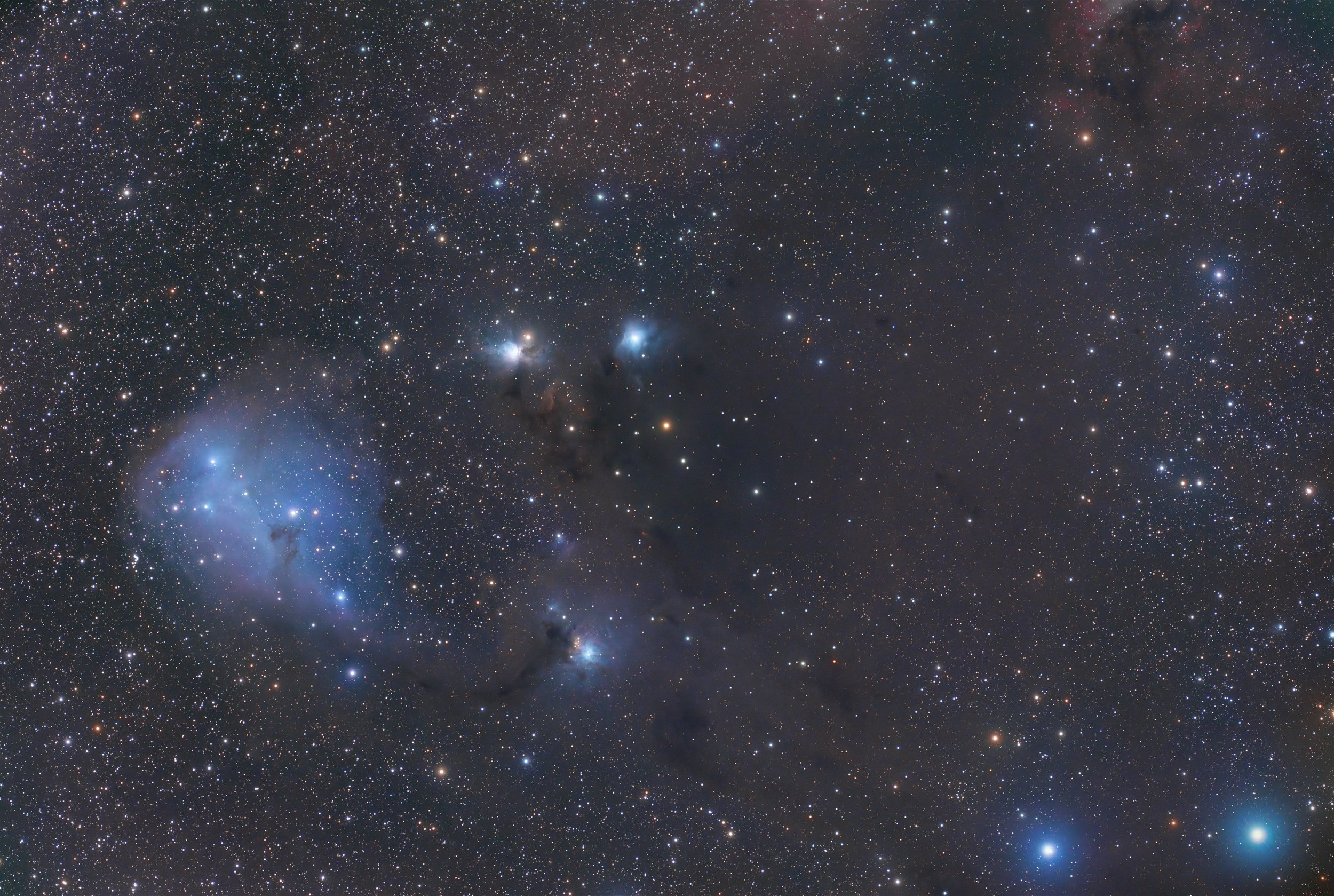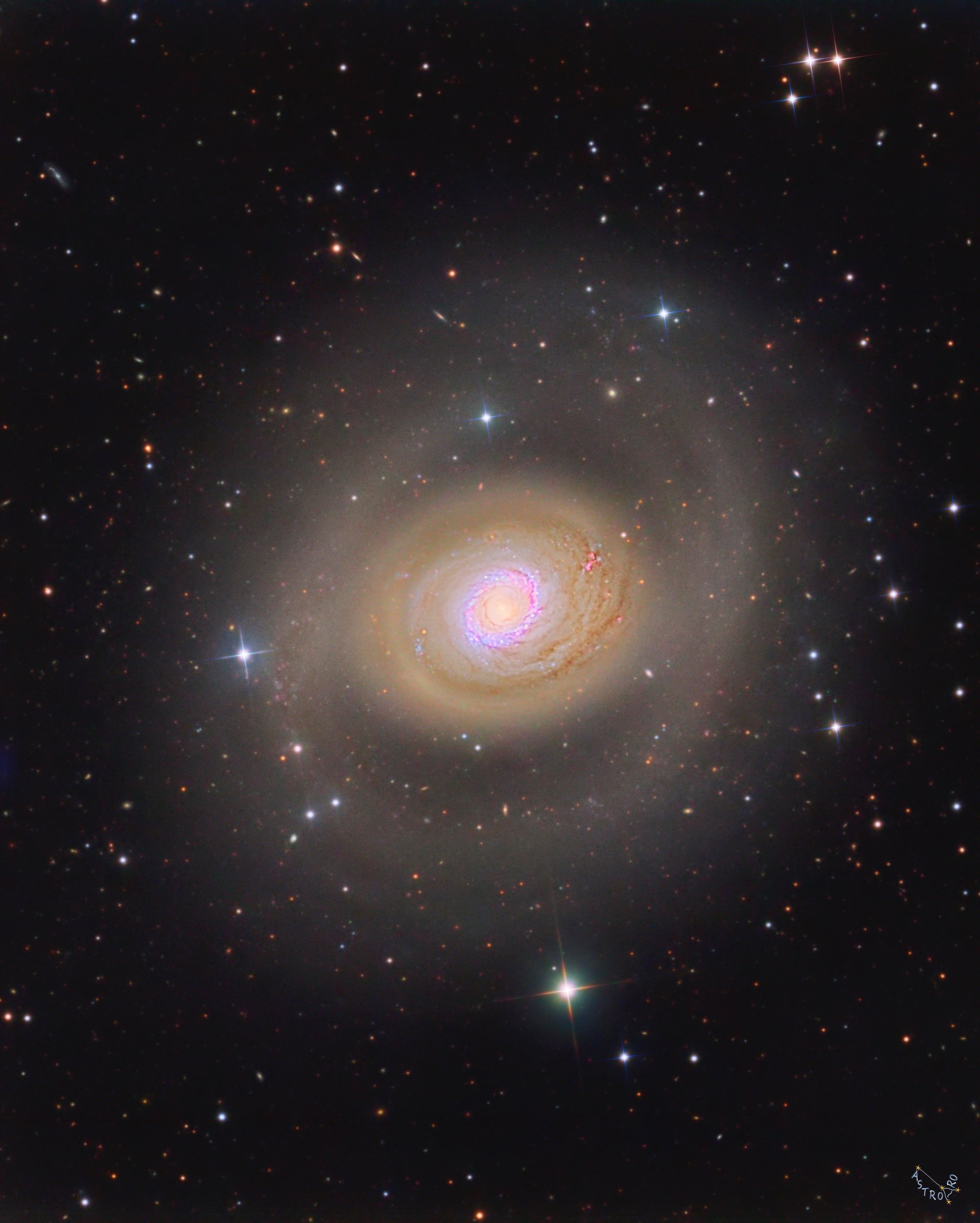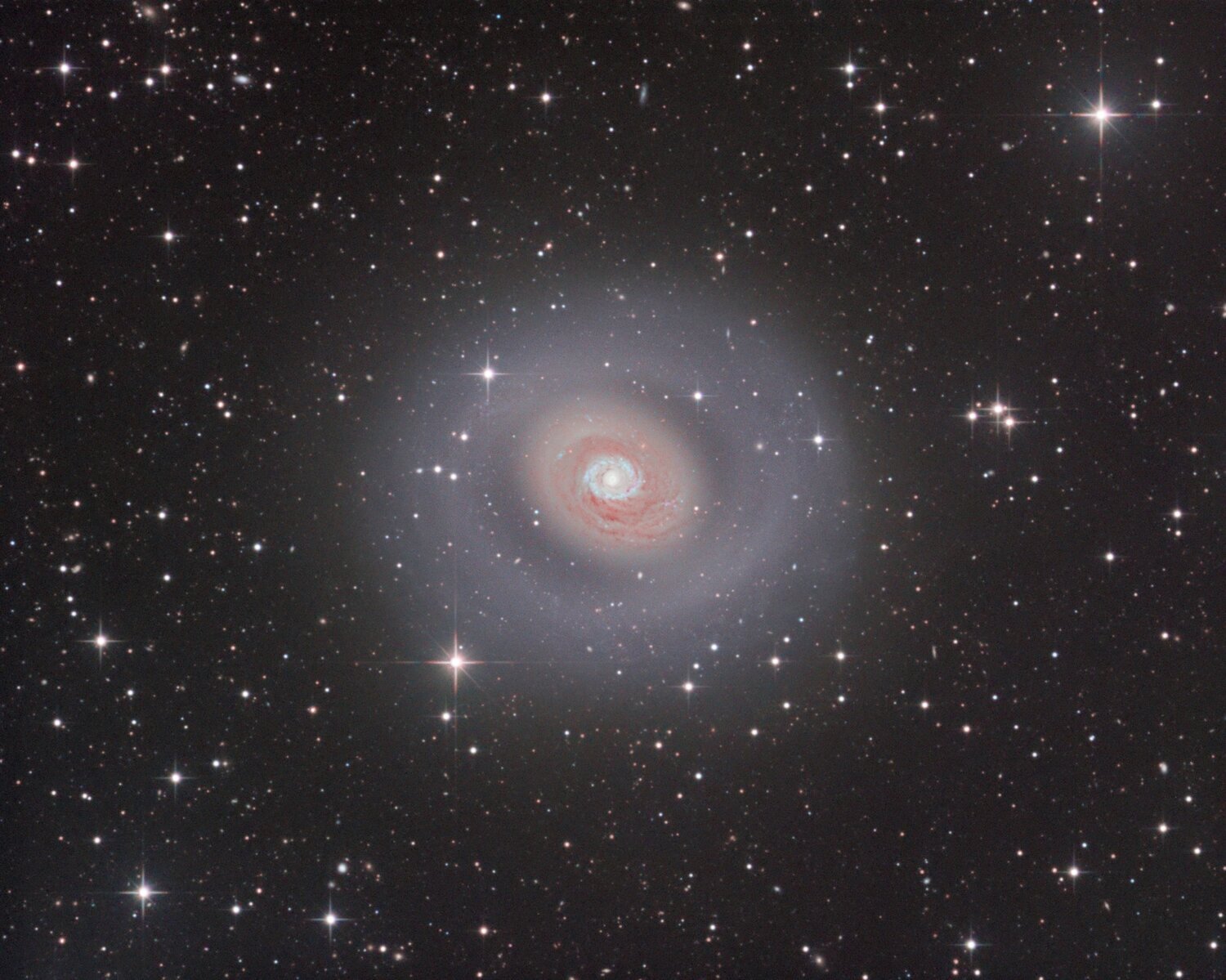
AAPOD2 Image Archives
M94 LRGB Croc's Eye Galaxy
At the heart of the constellation Canes Venatici lies Messier 94, a striking spiral galaxy also known as the Croc’s Eye. Seen nearly face-on from Earth, M94’s tightly wound spiral arms and bright inner ring give it a distinctive, hypnotic appearance. This LRGB image reveals both the luminous central starburst region and the faint, extended outer disk, a structure rarely visible in casual observations. The inner core glows with pinkish star-forming regions surrounded by a bluish halo of young stars, encased in a faint oval of dust and gas.
Captured under Bortle 4 skies in Qatar, this deep exposure blends over 20 hours of luminance, red, green, and blue data to highlight both detail and faint structure. The galaxy spans about 30,000 light-years and lies roughly 16 million light-years away, making it a relatively close and photogenic target. M94’s unusual double-ringed morphology continues to intrigue astronomers, offering insights into galaxy evolution and internal dynamics shaped by bar instabilities and density waves.
M94 in Canes Venatici
NGC 4736, commonly known as M94, is a stunning spiral galaxy located in the constellation Canes Venatici. This galaxy, situated about 16 million light-years from Earth, features a unique ring structure that sets it apart from other spiral galaxies. The bright inner ring is an area of intense star formation, a phenomenon driven by the galaxy's central bar structure which funnels gas towards the core. This ring of young, hot stars gives M94 its distinctive appearance and makes it a popular target for astronomers and astrophotographers alike.
Galaxy M94
Image Description and Details : Galaxy M94 or Ngc 4736 is located about 14 million light years away in the constellation of the Hounds. The M94 galaxy is certainly one of the most beautiful galaxies observable in the spring sky. NGC 4736 was discovered by the French astronomer Pierre Méchain in 1781. Messier 94 is thought to have a diameter of 30,000 to 50,000 A.L. corresponding to its main nucleus. Beyond this, a much fainter looking halo extends another few tens of thousands of A.L. This picture was taken in Alentejo (South Portugal) in Remote de France by Team ARO from 04/07/22 to 05/08/22. Astrosib 400/3200 telescope on DDM 85 ASA mount. Camera Moravian G3 16200. Lum=89X5'. R,G,B=80x5' each Ha=18x20' each Total=33.41H Pixinsight-Photoshop processing
Copyright: Team ARO
M94
M94 is classified as having a low ionization nuclear emission region (LINER) nucleus. LINERs in general are characterized by optical spectra that reveal that ionized gas is present but the gas is only weakly ionized (i.e. the atoms are missing relatively few electrons). M94 contains both an inner ring with a diameter of 70 arcseconds (approximately 5400 LY, 1.700 kpc at the distance of M94) and an outer ring with a diameter of 600 arcseconds (approx. 45,000 LY, 14 kpc). These rings appear to form at resonance locations within the disk of the galaxy. The inner ring is the site of strong star formation activity and is sometimes referred to as a starburst ring. This star formation is fueled by gas that is dynamically driven into the ring by the inner oval-shaped bar-like structure.






